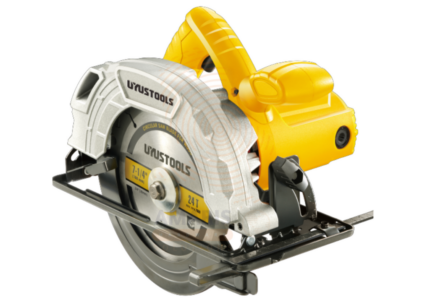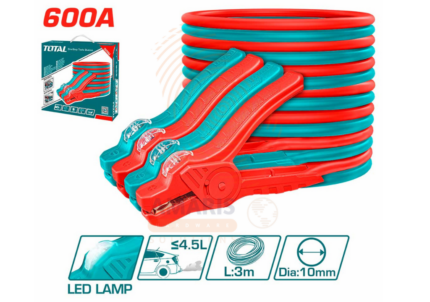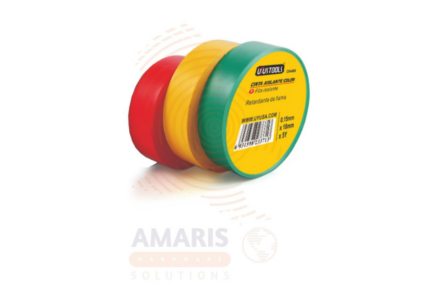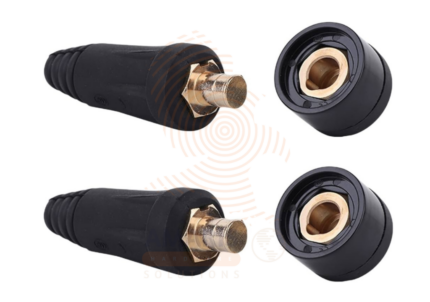
G-Clamp Light Set
$23.08 Original price was: $23.08.$21.93Current price is: $21.93.

Circular Saw
$107.69 Original price was: $107.69.$102.31Current price is: $102.31.
Circuit Tester
WhatsApp Order
A circuit tester is a device used to determine the presence or absence of an electrical current in a circuit. It is designed to verify whether electricity can flow through a specific point in the circuit and helps identify issues such as open circuits, short circuits, or faulty components. Typically, a circuit tester consists of a probe or a set of probes that are applied to different points in the circuit, providing visual or audible indications of the electrical status. This tool is widely used by electricians, technicians, and DIY enthusiasts to troubleshoot electrical systems and ensure proper functionality.
Description
Uses of a CIRCUIT TESTER
- Open Circuit Identification: Circuit testers can determine if there is an open circuit, where the electrical current is interrupted or not flowing through the circuit as intended. This is useful for identifying breaks in wires or connections.
- Short Circuit Detection: Short circuits occur when there is an unintended connection between different points in a circuit. Circuit testers can help locate and identify short circuits, which can be crucial for preventing electrical fires or damage to components.
- Voltage Verification: Circuit testers can be used to verify the presence of voltage in a circuit. This is essential for ensuring that power is reaching the intended components or devices.
- Continuity Testing: These testers are often used to check the continuity of a circuit, ensuring that there is a complete path for the electrical current. This is important for verifying the integrity of wires, switches, and other components.
- Ground Fault Detection: Circuit testers can help identify ground faults, where the electrical current unintentionally flows to the ground. Ground faults can be hazardous, and a circuit tester can be used to locate and address these issues.
- Outlet and Socket Testing: In residential and commercial settings, circuit testers are used to check the functionality of electrical outlets and sockets. This includes verifying proper wiring, grounding, and polarity.
- Automotive Electrical Troubleshooting: Circuit testers are widely used in automotive diagnostics to identify and resolve electrical issues in vehicles. They can help pinpoint faults in wiring, fuses, and other components.
- Appliance Repair: When appliances malfunction, circuit testers are employed to identify electrical problems within the appliances. This includes checking power cords, switches, and internal wiring.
- Safety Checks: Circuit testers are essential for safety inspections, ensuring that electrical systems meet safety standards and regulations. They help identify potential hazards and prevent electrical accidents.
- DIY Electrical Projects: Circuit testers are valuable tools for individuals undertaking do-it-yourself (DIY) electrical projects. They provide a means to verify the correctness and safety of electrical work.
SAFETY HANDLING PRECAUTIONS
- Inspect the Circuit Tester:
- Before use, inspect the circuit tester for any signs of damage or wear. Ensure that the probe, leads, and housing are in good condition.
- Wear Personal Protective Equipment (PPE):
- Always wear appropriate personal protective equipment, such as insulated gloves and safety goggles, to protect yourself from potential electrical shocks.
- Turn Off Power:
- Before testing a circuit, make sure to turn off the power to the circuit you are working on. This can be done by switching off the corresponding circuit breaker or disconnecting the power source.
- Verify the Circuit Tester:
- Confirm that the circuit tester is functioning correctly by testing it on a known live circuit. This helps ensure that the tester is reliable and provides accurate readings.
- Use the Right Tool for the Job:
- Select the appropriate type of circuit tester for the specific task. There are different types of circuit testers for various applications, including voltage testers, continuity testers, and others.
- Avoid Contact with Conductive Surfaces:
- Ensure that you and the circuit tester do not come into contact with conductive surfaces while testing. This reduces the risk of creating unintended electrical paths.
- Keep Hands Dry:
- Dry your hands thoroughly before using a circuit tester. Moisture can increase the risk of electric shock.
- Isolate the Circuit:
- Whenever possible, isolate the circuit you are testing to prevent interference from other live circuits. This minimizes the risk of misinterpretation of readings.
- Follow Proper Procedures:
- Adhere to the manufacturer's instructions and recommended procedures for using the circuit tester. This includes proper connection of probes, correct usage, and interpretation of readings.
- Work in Well-Lit Areas:
- Ensure that you have sufficient lighting when working with a circuit tester. This helps you see clearly and avoid mistakes that could lead to accidents.
- Avoid Overloading the Circuit Tester:
- Do not exceed the maximum voltage or current ratings of the circuit tester. This can damage the tool and pose safety risks.
- Use Insulated Tools:
- If you need to manipulate components within the circuit, use insulated tools to prevent accidental contact with live parts.
- Communicate with Others:
- If you are working as part of a team, communicate your actions and intentions to others to avoid misunderstandings and coordinate for safety.
Related products
Booster Cable with Lamp
A Booster Cable with Lamp is a heavy-duty electrical cable set used to jump-start vehicles by connecting the battery of a functioning vehicle to a discharged battery. This cable set includes integrated lamps—usually LED indicators or flashlight attachments—that provide visibility and signal proper connection during use, especially in low-light conditions. The cables typically feature robust clamps for secure battery terminal attachment and insulated wires to handle high current flow safely. This tool is essential for roadside emergencies, automotive workshops, and vehicle maintenance.
C Clamp Locking Pliers
A C clamp locking pliers, often simply referred to as locking pliers or Vise-Grips (a popular brand name), is a versatile hand tool designed for gripping, clamping, and holding objects securely. The tool features an adjustable locking mechanism that allows it to maintain a constant grip force on the object, freeing the user's hands for other tasks. The jaws of the pliers are shaped like a C-clamp, providing a strong and secure grip on various shapes and sizes of objects. This makes C clamp locking pliers particularly useful in situations where a stable hold is required, such as in woodworking, metalworking, automotive repair, and general DIY applications.
Caulk Gun
A caulk gun, also known as a caulking gun or a sealant gun, is a hand-held tool designed for dispensing and applying caulking or sealant materials. It typically consists of a metal or plastic frame with a trigger mechanism, a rod to advance the caulk cartridge, and a nozzle for precise application. The caulk gun is commonly used in construction, home improvement, and various maintenance projects to seal gaps, joints, or seams in order to prevent air, water, or pests from infiltrating a structure.
Coloured Insulating Tape
Coloured insulating tape is a flexible adhesive tape used primarily for electrical insulation and wire identification. Made from durable materials like PVC, it provides excellent resistance to abrasion, moisture, and varying temperatures. The tape comes in multiple colours to allow easy colour-coding of electrical wires and cables, enhancing safety and organization in electrical installations.
Combination Square
A combination square is a versatile measuring tool used in woodworking, metalworking, and other precision tasks. It typically consists of a ruler with a sliding adjustable square head that can be locked at different angles along the length of the ruler. The square head can be used as a 90-degree square for checking or marking right angles, or it can be positioned at other angles to measure and mark various angles accurately. The ruler often has markings in both imperial and metric units, providing flexibility for different measurement systems. Additionally, combination squares may have a level bubble for ensuring horizontal or vertical alignment.
Digital Multi-Meter
A digital multi meter (DMM) is a versatile electronic measuring instrument that combines several measurement functions into a single device. It is commonly used by technicians and engineers to measure electrical parameters such as voltage, current, and resistance in electronic circuits. Unlike analog mustimeters, which use a moving needle to display readings, digital multi meters provide precise and easy-to-read numerical displays. Additionally, many DMMs offer features like continuity testing, diode testing, and capacitance measurement, making them essential tools for troubleshooting and maintaining electrical and electronic systems
Digital Multi-Purpose Clamp Meters
A digital multi-purpose clamp meter is a versatile electronic measuring instrument designed to measure electrical current by clamping around a conductor, typically without the need to disconnect the circuit. It combines the functionalities of a digital multi meter with the convenience of a clamp to accurately measure AC and DC currents, voltage, resistance, capacitance, frequency, and other electrical parameters in various applications. The clamp feature allows for non-invasive current measurements, making it suitable for both professionals and hobbyists in fields such as electrical maintenance, troubleshooting, and testing.
Female Connector – Complete
A Female Connector - Complete is a device or component that provides a port or socket designed to accept and mate with a corresponding male connector. In the context of electrical or electronic systems, it typically refers to a receptacle with internal contacts or terminals that establish electrical connections when joined with a male connector, facilitating the transmission of signals, power, or data between devices. The design of female connectors often includes features such as specific shapes, sizes, and locking mechanisms to ensure compatibility and secure connections.


 Acrylic Sealants
Acrylic Sealants Construction Adhesives
Construction Adhesives Double-Sided Tape
Double-Sided Tape Duct Tape
Duct Tape Electrical Tape
Electrical Tape Epoxy & Resins
Epoxy & Resins Masking Tape
Masking Tape
 Automotive Wrenches & Socket Sets
Automotive Wrenches & Socket Sets Battery Chargers & Jump Starters
Battery Chargers & Jump Starters Car Jacks & Stands
Car Jacks & Stands Car Wash & Detailing Products
Car Wash & Detailing Products Diagnostic Tools
Diagnostic Tools Tire Inflators
Tire Inflators Vehicle Lighting
Vehicle Lighting Oil & Lubricants
Oil & Lubricants
 Adhesives & Sealants
Adhesives & Sealants Bricks & Blocks
Bricks & Blocks Cement & Concrete
Cement & Concrete Drywall & Plaster
Drywall & Plaster Flooring (Tiles, Wood, Laminate)
Flooring (Tiles, Wood, Laminate) Lumber & Plywood
Lumber & Plywood Paints, Primers & Coatings
Paints, Primers & Coatings Insulation Materials
Insulation Materials Roofing Materials
Roofing Materials
 Circuit Breakers
Circuit Breakers Electrical Cables & Wires
Electrical Cables & Wires Switches & Sockets
Switches & Sockets Fuses & Relays
Fuses & Relays Connectors & Terminals
Connectors & Terminals Electrical Boxes & Panels
Electrical Boxes & Panels Conduit & Fittings
Conduit & Fittings Lighting Fixtures & Bulbs
Lighting Fixtures & Bulbs Extension Cords & Power Strips
Extension Cords & Power Strips
 Anchors
Anchors Bolts
Bolts Clips & Clamps
Clips & Clamps Screws
Screws Nuts
Nuts Washers
Washers Rivets
Rivets Nails
Nails Threaded Rods
Threaded Rods
 Hammers
Hammers Measuring Tools (Tapes, Levels, Calipers)
Measuring Tools (Tapes, Levels, Calipers) Screwdrivers
Screwdrivers Pliers & Cutters
Pliers & Cutters Saws & Blades
Saws & Blades Chisels & Punches
Chisels & Punches Allen Keys & Hex Keys
Allen Keys & Hex Keys Ratchets & Socket Sets
Ratchets & Socket Sets Wrenches & Spanners
Wrenches & Spanners
 Power Tool Accessories (Blades, Bits, Discs)
Power Tool Accessories (Blades, Bits, Discs) Rotary Tools
Rotary Tools Saws (Circular, Jigsaw, Reciprocating)
Saws (Circular, Jigsaw, Reciprocating) Drills & Drivers
Drills & Drivers Grinders & Sanders
Grinders & Sanders Heat Guns
Heat Guns Nail Guns
Nail Guns Impact Wrenches
Impact Wrenches Batteries & Chargers
Batteries & Chargers
 Pipes & Fittings (PVC, Copper, PEX)
Pipes & Fittings (PVC, Copper, PEX) Plumbing Tools
Plumbing Tools Pumps & Motors
Pumps & Motors Sealants & Adhesives for Plumbing
Sealants & Adhesives for Plumbing Valves & Taps
Valves & Taps Water Heaters
Water Heaters Drainage Systems
Drainage Systems Faucets & Fixtures
Faucets & Fixtures Hoses & Tubing
Hoses & Tubing
 Hinges & Latches
Hinges & Latches Hooks & Brackets
Hooks & Brackets Window Hardware
Window Hardware Chains & Cables
Chains & Cables Casters & Wheels
Casters & Wheels Shelving & Storage Systems
Shelving & Storage Systems Door Handles & Locks
Door Handles & Locks Drawer Slides & Cabinet Hardware
Drawer Slides & Cabinet Hardware
 Personal Protective Equipment (PPE)
Personal Protective Equipment (PPE) Respirators & Masks
Respirators & Masks Safety Glasses
Safety Glasses Safes
Safes Security Cameras
Security Cameras Gloves
Gloves Helmets
Helmets Ear Protection
Ear Protection Fire Safety Equipment
Fire Safety Equipment Locks & Padlocks
Locks & Padlocks Motion Sensors & Alarms
Motion Sensors & Alarms
 Garden Fencing
Garden Fencing Garden Furniture Hardware
Garden Furniture Hardware Lawn Mowers
Lawn Mowers Trimmers & Edgers
Trimmers & Edgers Shovels & Spades
Shovels & Spades Rakes & Hoes
Rakes & Hoes Pruning Shears & Loppers
Pruning Shears & Loppers Watering Systems (Hoses, Sprinklers, Nozzles)
Watering Systems (Hoses, Sprinklers, Nozzles)
 Interior Paints
Interior Paints Paint Brushes & Rollers
Paint Brushes & Rollers Paint Strippers & Thinners
Paint Strippers & Thinners Paint Trays & Accessories
Paint Trays & Accessories Exterior Paints
Exterior Paints Spray Paints
Spray Paints Primers & Undercoats
Primers & Undercoats Varnishes & Stains
Varnishes & Stains
 Gaskets & Seals
Gaskets & Seals Hydraulic Fittings
Hydraulic Fittings Industrial Fasteners
Industrial Fasteners Industrial Hoses
Industrial Hoses Lubricants & Greases
Lubricants & Greases Metal Sheets & Bars
Metal Sheets & Bars Bearings & Bushings
Bearings & Bushings Belts & Pulleys
Belts & Pulleys
 HVAC Filters
HVAC Filters Insulation for HVAC
Insulation for HVAC Air Conditioners
Air Conditioners Refrigerants
Refrigerants Ventilation Ducts & Fittings
Ventilation Ducts & Fittings Thermostats & Controllers
Thermostats & Controllers Fans & Blowers
Fans & Blowers
 Pegboards & Hooks
Pegboards & Hooks Shelving Units
Shelving Units Storage Bins & Containers
Storage Bins & Containers Toolboxes & Tool Chests
Toolboxes & Tool Chests Workbenches
Workbenches Drawer Organizers
Drawer Organizers Labeling Supplies
Labeling Supplies
 Welding Accessories (Clamps, Brushes)
Welding Accessories (Clamps, Brushes) Welding Electrodes & Rods
Welding Electrodes & Rods Welding Helmets & Gloves
Welding Helmets & Gloves Welding Machines
Welding Machines Soldering Irons & Stations
Soldering Irons & Stations Flux & Solder Wire
Flux & Solder Wire
 Generator Accessories
Generator Accessories Inverters
Inverters Portable Generators
Portable Generators Power Inverters
Power Inverters Transfer Switches
Transfer Switches Diesel & Gasoline Generators
Diesel & Gasoline Generators
 Transport Equipment: Carts, Dollies, and Hand Trucks
Transport Equipment: Carts, Dollies, and Hand Trucks Storage Solutions: Pallets, Racks, and Containers
Storage Solutions: Pallets, Racks, and Containers Lifting Equipment: Hoists, Cranes, and Jacks
Lifting Equipment: Hoists, Cranes, and Jacks Conveyors and Accessories: Belts and Rollers
Conveyors and Accessories: Belts and Rollers










